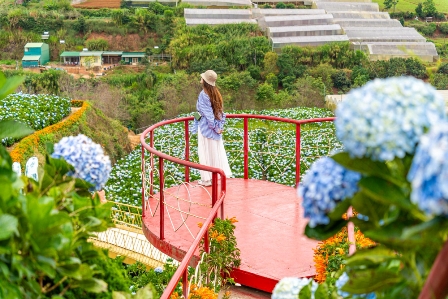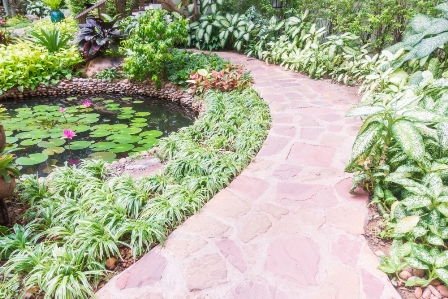In the realm of modern landscaping, the concept of edible landscapes is gaining considerable traction. Gone are the days when gardens were solely ornamental; today, individuals are keen on integrating functionality with beauty in their outdoor spaces. This article explores the intricate fusion of function and beauty in patio and garden design, emphasizing the art of cultivating edible landscapes that are not only visually appealing but also environmentally sustainable.
Imagine stepping into your backyard and being greeted not only by the vibrant colors of flowers but also by the aroma of herbs and the sight of ripe vegetables. Edible landscapes go beyond traditional gardening; they are a harmonious blend of aesthetics and practicality.
Benefits of Edible Landscapes
Enhancing Sustainability
Edible landscapes contribute to sustainability by reducing the carbon footprint associated with food transportation. Growing your own food minimizes the need for long-distance shipping and cold storage, thereby reducing environmental impact.
Reducing Ecological Footprint
By incorporating edible plants into landscaping, individuals contribute to biodiversity and create a healthier ecosystem. Edible landscapes encourage a balanced environment that supports a variety of insects, birds, and beneficial microorganisms.
Nutritional Benefits
The obvious advantage of edible landscapes is the availability of fresh, organic produce right at your doorstep. It’s a convenient way to ensure a diverse and nutritious diet while enjoying the visual delight of a well-designed garden.
Design Principles for Edible Landscapes
Creating a successful edible landscape involves a thoughtful approach to design.
Integration of Edible Plants with Ornamental Ones
One key principle is to seamlessly integrate edible plants with ornamental ones. This requires strategic placement to maintain the visual appeal while ensuring each plant receives adequate sunlight and nutrients.
Proper Spacing and Layout for Optimal Growth
Effective spacing and layout planning are crucial to avoid overcrowding and competition for resources among plants. This ensures optimal growth and a balanced aesthetic.
Seasonal Considerations in Design
A well-thought-out design also considers seasonal changes. Different plants thrive in different seasons, and a thoughtful design takes advantage of this natural cycle, providing interest and variety throughout the year.
Patio Design with Edible Plants
For those with limited outdoor space, patios can be transformed into thriving edible gardens.
Container Gardening Ideas
Container gardening is a practical solution for patios. Utilize various-sized containers creatively, combining herbs, vegetables, and flowers for a visually appealing and functional space.
Balancing Aesthetics and Functionality in a Small Space
In a smaller area, striking the right balance between aesthetics and functionality is crucial. Opt for compact varieties of plants, use vertical space efficiently, and consider companion planting for maximum yield.
Selecting Suitable Edible Plants for Patios
Not all edible plants are suited for container gardening. Choose varieties that thrive in confined spaces, and consider factors like sunlight, water requirements, and compatibility with other plants.
Garden Design with Edible Plants
Expansive gardens provide ample opportunities for creating a diverse and thriving edible landscape.
Creating a Harmonious Blend
The key to a successful garden design is creating a harmonious blend of vegetables, fruits, and flowers. This not only adds visual interest but also contributes to a healthier garden ecosystem.
Companion Planting Strategies
Strategic companion planting enhances the growth and health of plants. For example, planting basil near tomatoes can improve the latter’s flavor and deter pests.
Maximizing Space Utilization
In larger gardens, maximize space by incorporating raised beds, vertical gardening, and intercropping techniques. This allows for a more efficient use of resources and creates an engaging landscape.
Tips for Maintenance
Maintaining edible landscapes involves more than just routine care.
Pruning Techniques
Proper pruning ensures the health and productivity of both ornamental and edible plants. Regularly remove dead or diseased branches, promoting air circulation and preventing pest infestations.
Pest Control in an Eco-Friendly Manner
Avoiding chemical pesticides is crucial for the sustainability of edible landscapes. Employ natural methods such as companion planting, introducing beneficial insects, and using neem oil for pest control.
Seasonal Maintenance Routines
Different seasons demand different maintenance routines. Be it winter protection, spring fertilization, or summer watering schedules, a well-planned maintenance calendar ensures year-round success.
Harvesting and Utilizing the Yield
A bountiful harvest is the reward for careful planning and maintenance.
Timing and Methods for Harvesting
Knowing the right time to harvest each crop is essential. Harvesting at the peak of ripeness ensures optimal flavor and nutritional value.
Culinary and Decorative Uses
The fruits of your labor are not limited to the kitchen. Edible plants can be utilized decoratively in various culinary and beverage creations, elevating your dining experience.
Encouraging Sustainable Practices in Consumption
Share your surplus produce with neighbors, or consider donating to local food banks. Encouraging sustainable practices in consumption completes the cycle of a truly eco-friendly landscape.
Environmental Impact of Edible Landscapes
Beyond personal benefits, edible landscapes positively impact the environment.
Reducing Food Transportation Carbon Footprint
Growing your own food significantly reduces the carbon footprint associated with transporting produce from farms to markets. This small change contributes to a more sustainable future.
Promoting Local Biodiversity
Edible landscapes support local biodiversity by creating habitats for various insects and birds. This promotes a healthy and balanced ecosystem in your immediate surroundings.
Soil Health Benefits
Continuous cultivation and integration of organic matter from kitchen scraps enhance soil health. Edible landscapes act as a natural fertilizer, creating a thriving environment for plants.
Community Engagement
The beauty of edible landscapes extends beyond individual gardens.
Encouraging Neighborhood Participation
Initiate community projects and encourage neighbors to join in the creation of shared edible spaces. This fosters a sense of community and shared responsibility.
Shared Community Gardens and Their Benefits
Explore the concept of shared community gardens, where residents collectively manage and benefit from a communal green space. These shared gardens become hubs of social interaction and collaboration.
Educational Programs on Edible Landscapes
Raise awareness and knowledge by organizing workshops and educational programs on edible landscapes. Empowering others to create their own functional and beautiful spaces contributes to a greener and healthier community.
Challenges and Solutions
Despite the many benefits, edible landscaping comes with its set of challenges.
Common Issues Faced in Maintaining Edible Landscapes
Identify common challenges such as pests, diseases, and environmental factors that can impact the success of your edible landscape.
Sustainable Solutions and Workarounds
Explore sustainable solutions to overcome challenges. From natural pest control methods to resilient plant varieties, there are ways to address common issues without compromising on sustainability.
Future Trends in Edible Landscapes
As technology and design evolve, so do the trends in edible landscaping.
Emerging Technologies in Smart Gardening
Discover how smart technologies are being integrated into edible landscaping. From automated irrigation systems to smart planters, technology enhances the efficiency and convenience of maintaining edible gardens.
Innovative Design Concepts
Explore the latest design concepts that go beyond traditional gardening. From vertical gardens to multi-functional landscapes, innovative designs are shaping the future of edible landscapes.
The Evolving Role of Edible Landscapes in Urban Planning
As cities expand, the integration of edible landscapes into urban planning becomes more critical. Explore how city planners and architects are incorporating green spaces that serve both aesthetic and functional purposes.
FAQs
Yes, edible landscapes can be adapted to various climates by selecting appropriate plant varieties and adjusting planting and care routines.
The time required for maintenance depends on the size and complexity of the landscape. However, with proper planning, routine tasks can be efficiently managed.
Urban settings often present unique challenges, but vertical gardening, container gardening, and community initiatives make it possible to create edible landscapes in limited spaces.
Common pests include aphids, caterpillars, and snails. Natural control methods include introducing beneficial insects, companion planting, and using neem oil.
Organize community workshops, share success stories, and highlight the benefits of edible landscapes to spark interest and engagement in your neighborhood.
Conclusion
In the world of landscaping, the fusion of function and beauty finds its pinnacle in edible landscapes. From small patios to expansive gardens, the marriage of ornamental and edible plants creates not only visually stunning spaces but also contributes to a sustainable and healthy lifestyle. As you embark on your journey of creating an edible landscape, remember that the beauty of these spaces lies not just in their appearance but in the myriad benefits they bring to individuals and the environment.












Find Us on Socials